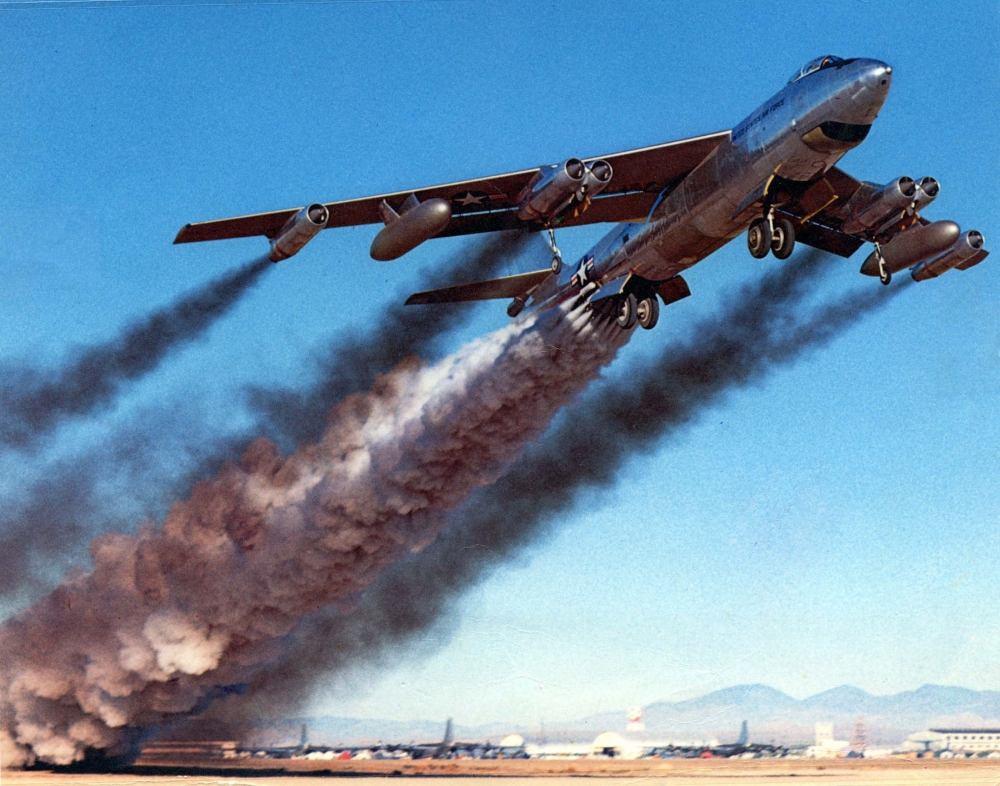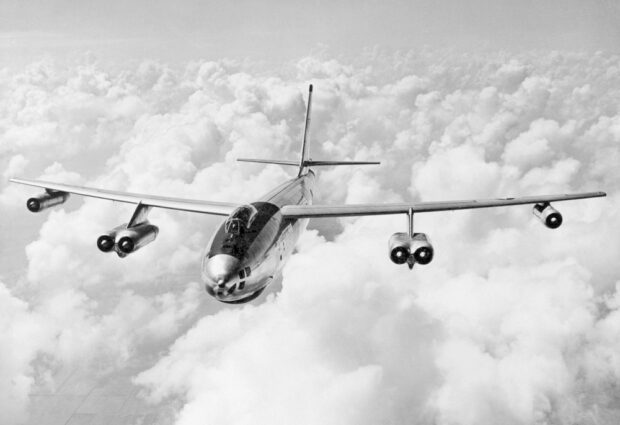The Boeing B-47 Stratojet (Boeing company designation Model 450) is a retired American long-range, six-engined, turbojet-powered strategic bomber designed to fly at high subsonic speed and at high altitude to avoid enemy interceptor aircraft. The primary mission of the B-47 was as a nuclear bomber capable of striking targets within the Soviet Union.
Development of the B-47 can be traced back to a requirement expressed by the United States Army Air Forces (USAAF) in 1943 for a reconnaissance bomber that harnessed newly developed jet propulsion. Another key innovation adopted during the development process was the swept wing, drawing upon captured German research.
With its engines carried in nacelles underneath the wing, the B-47 represented a major innovation in post-World War II combat jet design, and contributed to the development of modern jet airliners. Suitably impressed, in April 1946, the USAAF ordered two prototypes, designated “XB-47”; on 17 December 1947, the first prototype performed its maiden flight.
Facing off competition such as the North American XB-45, Convair XB-46 and Martin XB-48, a formal contract for 10 B-47A bombers was signed on 3 September 1948. This would be soon followed by much larger contracts.
During 1951, the B-47 entered operational service with the United States Air Force’s Strategic Air Command (SAC), becoming a mainstay of its bomber strength by the late 1950s. Over 2,000 were manufactured to meet the Air Force’s demands, driven by the tensions of the Cold War. The B-47 was in service as a strategic bomber until 1965, at which point it had largely been supplanted by more capable aircraft, such as the Boeing B-52 Stratofortress.

The rocket-assisted take-off of a Boeing B-47B, powered by GE J47 engines and Solid Rocket Thrusters; reportedly taken on 15th of April 1954
The B-47 was also adapted to perform a number of other roles and functions, including photographic reconnaissance, electronic intelligence, and weather reconnaissance. While never seeing combat as a bomber, reconnaissance RB-47s would occasionally come under fire near or within Soviet air space.
The type remained in service as a reconnaissance aircraft until 1969. A few served as flying testbeds up until 1977.
Sources: YouTube; Wikipedia

